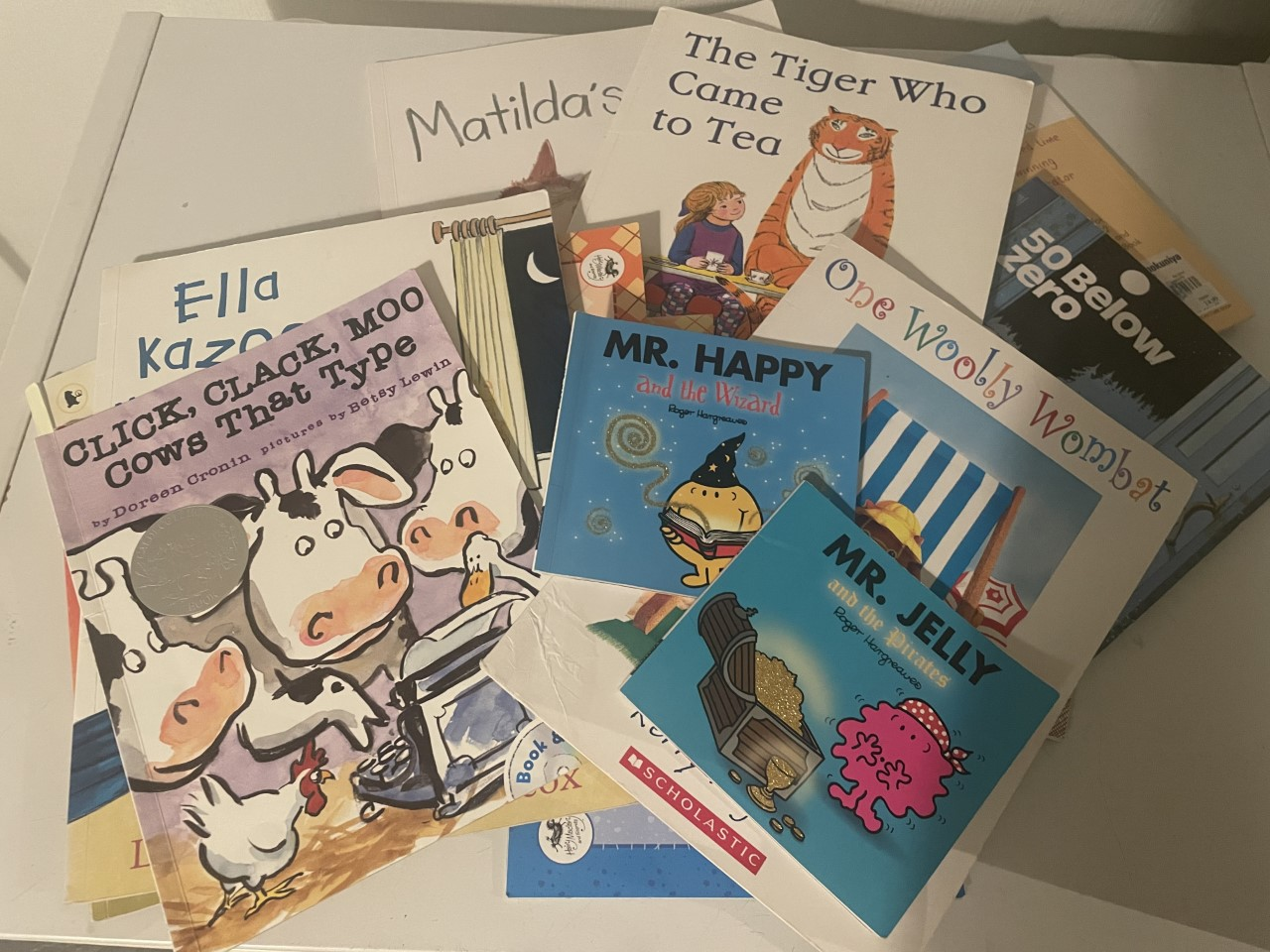Step one:
READING
Let the pupils chose a book to read. Autonomy in choosing the reading materials in school does wonders for their motivation, as recent research clearly shows. In my view, it is not true that kids don't want to read - kids just don't want to read what we want them to read. They want stories that engage and inspire them, that speak to them directly. Also, it is not true that kids are not interested in reading: they will be interested, if someone does it for them at first. Fill your classroom with books and read to them, and you shall see.
I am quite lucky to have a large selection of children's books in English at home. But if you are not that lucky, go to the local public library or poke around online, in antique bookshops, ask your relatives or colleagues.
I had brought 20-25 picture books and allowed them to chose, and then they wanted to read more - so they exchanged the books between them. Overall, each kid in my class read 4-5 books relatively silently for about 30 minutes. There will inevitably be one or two pupils who either have difficulties reading or can't be bothered - I paired them up with other pupils who enjoy reading in English, packed them away in a group room, and let them read the books out loud. It was wonderful, everyone got to enjoy at least one story.
RETELLING
Instruct the pupils to retell at least one of the stories they have read to a classmate. It is a great way to train their short-term memory, and of course improve their oral skills in English.
Step two:
WRITING
The next English lesson I allowed the pupils to look at the books again to refresh their memory. Subsequently, I instructed them to write a short summary of the book they liked the most. Some of them chose to write the summary together, and some just wanted to spend the time reading more books. This resulted in ten texts of various lengths and quality.
For example:
Text 2:
It was a fun book about a cat that was never scared. He wasn't scared of spiders, the dark and more, he was brave and cool. It was a short book but fun.
THANK YOU, IT WAS A FUN LESSON
Text 3:
Patrick got a trophy in the mail, he was surprised he went to Spongebob to show him. He said that he got his first trophy but Spongebob was confused because on the trophy there was Spongebob's name. Patrick was stunned because he never got a trophy and he was so happy but his mood fell down and he became sad. Spongebob said that he could get one of his old trophies but he opened the wrong door. Spongebob asked if he wanted to apply to a job so he could get a trophy “that is not a bad idea” said Patrick, he asked if he could apply to the krusty krab. The next day he came to the krusty krab and he started working but he felt “ i'm never gonna be good at anything”. He tried very many things but nothing worked. At the end he opened a jar of pickles and he did it!
Next day a car with a trophy sign came, then spongebob took the trophy and he read “the trophy goes to Patrick!” Patrick was surprised he didn't believe it.
Step three:
I organized and printed the texts and gave them the following task:
Work in groups. Read the texts which you have written and match them with the book titles.
Here are the 20 titles I gave them:
Book titles
Need any tips or materials? Do not hesitate to contact me - or subscribe to this blog for more fun ideas on how to motivate your pupils to read! :)
In the meantime, here is the link to the texts submitted by my pupils and the book titles they worked with.



Comments